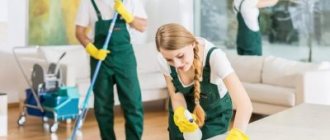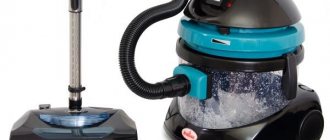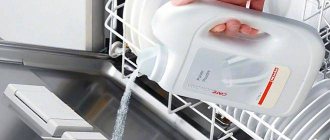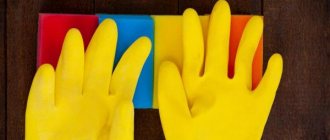From the article you will learn:
The epidemiological situation in the country is deteriorating again - regional authorities are introducing more and more new rules of life: canceling public events, limiting visits to public places by people who have not completed the full course of vaccination. In many cities, the administration obliges the heads of various institutions to organize measures to disinfect premises in which there are large gatherings of people. To implement such measures, it will be necessary to prepare a number of documents, including a schedule for sanitizing premises during coronavirus. We will tell you how to do this, as well as how and where to store it in our article.
Who cleans the premises?
Both cleaners who are part of the company’s staff and employees of third-party cleaning companies specializing in cleaning office and industrial premises can carry out measures to disinfect premises. All work must be carried out using disposable gloves or reusable gloves that are resistant to moisture.
During and after cleaning, it is important to take precautions to protect people from the negative effects of detergents and cleaning products:
- disinfectants must be stored in tightly closed containers to prevent accidental spillage of the contents, in a specially designated dry and cool place;
- In case of accidental poisoning with a detergent, it is necessary to provide first aid to the victim in accordance with the instructions on the label or in the accompanying documentation, and immediately consult a doctor.
Determining the duration of cleaning
When creating a cleaning schedule, you should take into account the time required for the cleaner to carry out individual tasks during one particular cleaning. The main operations performed during cleaning include:
- sweeping;
- washing, moisturizing;
- changing water and cleaning solutions;
- collection of waste from workplaces;
- sorting and placing waste and garbage into containers;
- wiping, sweeping panels, walls, screens, etc.;
- delivery of garbage and waste to the designated place for their collection.
In addition, the responsibilities of the cleaner may include watering flowers, cleaning mirrors, washing window glass, wiping curtain rods, vacuuming coatings, disinfecting, replacing towels, etc. When determining the duration of cleaning, these operations must also be taken into account.
In addition, the following are taken into account:
- type of premises (industrial, office, residential), as well as the approximate amount of waste that is generated in it during the day;
- room area.
How to create a schedule for sanitizing premises?
There are no uniform rules that precisely define the procedure for carrying out sanitary treatment, as well as drawing up accompanying documentation. That is why the employer (or the owner of a premises in which there are large gatherings of people) has the right to develop such documentation independently.
The premises sanitization schedule may include the following information:
- Title of the document;
- name of the organization in which it is used;
- dates for periodic cleaning;
- the time at which they are held;
- a list of disinfectants used when treating premises;
- FULL NAME. the employee who performed the cleaning and his signature.
Tips for creating a cleaning plan
You can plan activities to create cleanliness in your home for different periods of time. When creating a cleaning schedule, you should first outline your responsibilities and make a list of all household chores.
List of household chores
It is better to break complex tasks (cleaning the nursery, cleaning the plumbing) into stages (sorting out children's things in the chest of drawers, putting toys in a drawer). If the number of tasks turns out to be long, the house cleaning plan can be scheduled not for a week, but two or even three in advance.
Important! It is required to formulate tasks for each day as specifically as possible.
Approximate weekly house cleaning schedule:
| Day of the week | Responsibilities | |
| Monday | · to wash the dishes; · wipe down the kitchen table and sink; · wash the floor in the “dirty” hallway area; · clean the toilet. | · wash the floors; · disassemble the wardrobe. |
| Tuesday | · vacuum the carpets; · clean the bathroom. | |
| Wednesday | · clean the bathroom sink; · wipe dust in the rooms; · change bed linen. | |
| Thursday | · wipe the dust from the TV and computer; · Wash the floors. | |
| Friday | · wash the mirrors; · Vacuum the furniture. | |
| Saturday | · wipe the dust in the hallway; · Wash kitchen cabinets. | |
| Sunday | · Wash the trash can; · clean the stove; · change bed linen. |
Don't overwork yourself and plan too much for the day. The main goal of a household chore schedule is to make the cleaning process faster and easier. Problem areas of the apartment that need close attention or additional effort can be highlighted as separate points.
Examples of such zones:
- floor areas behind furniture, washing machine, stove;
- tiled “apron” in the kitchen;
- tiles in the bathroom;
- the upper surfaces of tall cabinets, where you can’t easily reach;
- lamp shades;
- scale in the kettle.
Each apartment has its own frequently dirty places, which the owners rarely reach. Pet owners will have to vacuum carpets and furniture to remove fur more often, and those who are fond of indoor plants will have to regularly wipe pots and window sills. If the house has its own library, it will require caring for the books and periodically cleaning the volumes from dust.
We recommend:
How to connect a robot vacuum cleaner: step-by-step instructions
Sorting responsibilities
Once the to-do list has been compiled, the entries need to be sorted. This way you can plan things not only for a week, but also for longer periods.
Example of sorting household chores:
| Periodicity | Housework |
| Once a week | · clean plumbing fixtures (bathtub, sink, shower); · wipe mirrors; · wash the trash can; · vacuum upholstered furniture. |
| Once in two weeks | · wash the area above the stove where grease gets in; · Wipe down kitchen cabinets. |
| Once a month | · clean the inside of the microwave; · wash small kitchen appliances; · clean the dishwasher; · Wash the floor behind furniture and large household appliances. |
| Once every three months | · clean the oven and hood; · wash the refrigerator. |
Additional recommendations for cleaning your apartment:
- Floors are washed or vacuumed when dirty. Usually once every 2-3 days is enough, but in a house with small children, wet cleaning is done daily.
- It is recommended to brush off dust every day, one at a time in different rooms of the apartment.
- It is advisable to clean bedding (pillows, blankets and mattresses), as well as window glass, every six months.
- Carpets are beaten and washed - once a year.
All household responsibilities are distributed by day, creating a schedule that is convenient for you. This requires taking into account the work schedules of family members and scheduling the heaviest household responsibilities on days that are less busy at work.
What does the schedule for sanitizing premises look like?
As a rule, the sanitization schedule is drawn up in tabular form - this makes it easier to include information about subsequent cleanings, as well as who carried them out and when. You can download sample graphs that are suitable for use both at an enterprise and in a preschool educational institution, here.
Download a sample schedule for sanitizing premises during coronavirus
Download a sample schedule for wet cleaning of premises during coronavirus
Download a sample schedule for ventilation of premises during coronavirus
Download a blank sanitization and disinfection schedule form
The sample can be reworked taking into account the specific cleaning practices in your organization. For example, you can enter information about the frequency of turning on the device for air disinfection, as well as information about the processing of personal protective equipment belonging to employees.
In general, the schedule for disinfection of premises may look like this:
| date | Time | Agent used for disinfection (indicating concentration) | FULL NAME. executive officer | Signature of the performing employee |
Journaling software
To independently compile a log of current cleaning, download the special program “1c enterprise” .
With its help, you can easily and quickly build tables, organize accounting and planned work.
To enlarge the picture, click on it
Room cleaning schedules, all types of cleaning, logs and tables are here>> If you need a bathroom cleaning log, read the article: Refrigerator cleaning log:
Who draws up and who fills out the schedule for sanitizing premises?
The schedule is drawn up by an employee who is assigned the appropriate responsibilities by order of the manager. Responsibility for document preparation may lie with:
- HR employee;
- head of the unit in which sanitization is carried out;
- head of a laboratory or other unit ensuring compliance with sanitary standards and rules at the enterprise.
The schedule is filled out by the employee who carries out the cleaning - he must have free access to the document. After completing the disinfection measures, he must enter a schedule of information about what kind of cleaning he carried out, at what time, and what means were used. He must certify the specified information with his signature - otherwise it will be difficult to establish who carried out the cleaning and whether it was carried out at all.
Algorithm for current cleaning
Routine cleaning of premises is carried out at least 2 times a day, including cleaning and disinfection of floor surfaces, window sills, doors, furniture, and all equipment. Operating rooms undergo additional routine cleaning between surgeries. The use of only certified and safe cleaning and disinfectants is permitted.
When carrying out routine cleaning of premises, you must follow the principle:
- The first cleaning is done using detergents to thoroughly clean the surfaces from dirt and dust. The consumption rate of detergent additives is 50 grams per standard ten-liter bucket of water.
- The second cleaning includes the use of disinfectants. The concentration and composition are approved by the regulatory documents in force for the hospital.
Carrying out routine cleaning includes the following steps:
- Surface cleaning. To do this, you need to wipe all window sills, headboards, tables, other furniture and surfaces with a damp cloth or rag.
- A cleaning procedure is carried out in canteens or food centers for patients. After feeding, the distributor must wipe all tables, bedside tables and other surfaces.
- After cleaning the furniture and window sills, the floor is washed. In this case, the addition of a disinfectant solution is used.
- If necessary, additional quartzing is performed. This procedure is mandatory for routine cleaning of operating rooms.
- The final stage includes ventilation.
The used cloth used to wipe the surfaces is disinfected. To do this, the composition of the disinfectant solution is diluted in accordance with the approved hospital standards. After disinfection, the fabric or rags are rinsed or washed with running water until the smell of the disinfectant disappears. After this it is dried.
How to keep a cleaning schedule?
The processing schedule is stored in the same room in which disinfection measures are to be carried out. The document can be placed in a specially made wall plastic pocket or attached to the wall in a regular A4 file. It is important that access to it is constantly open, and the employee responsible for the cleaning can enter all the necessary information into the schedule after its completion.
The schedule is valid for a limited period of time - at least a day, maximum a month. After the document is completed, it must be replaced with a new schedule, with free columns and rows. The completed document must be filed in a special folder and archived. If the enterprise undergoes an inspection by Rospotrebnadzor, the original schedules will prove that disinfection measures are carried out regularly and in full.
Helpful information
The best monthly cleaning schedule is one drawn up individually, taking into account the schedule, the specifics of the company (for catering, a store, a hospital, the requirements are different) or the way of life of a particular family.
The following information will help you draw a schedule yourself and solve the issue of maintaining cleanliness in general:
- Open Microsoft Word. Find the "Insert" tab, click "Table". Create as many rows and columns as needed (you need to think in advance which items are needed). Sign them. Save the file. Click Print. You can take one of the samples presented above as a basis and add it at your discretion.
- When drawing up a schedule for a hospital, school, or kindergarten, you must be sure to rely on the requirements of SanPin.
- If cleaning is complex, involves multiple tasks, or requires the use of specific disinfectants at a certain concentration, you should print a step-by-step guide (plan) on a separate form. For example, it might look like this:
- The cleaning schedule must be realistic, otherwise it will remain on paper. It is better if it contains fewer tasks (provided that this does not contradict the requirements of SanPin).
- The less rubbish there is in a room or apartment, the easier it is to clean it, and the more willing the performers are to carry out their duties. You should throw away everything that is broken, things and furniture that have not been used for a long time.
- To clean less often, you can get miracle technology - an air washer and a robot vacuum cleaner. Microfiber rags, wipes for cleaning windows, and modern household chemicals such as foam for washing carpets and upholstered furniture will be a good help.
Using a cleaning schedule is the easiest way to discipline household members and employees. It can have different cycles, repeat daily, weekly, monthly, every six months, etc. There are a huge number of all kinds of tables and diagrams. It is most convenient for organizations to use a ready-made schedule journal. You can buy it in the stationery department. To maintain cleanliness and order in the house, it is better to use the samples presented above, or draw a table yourself.
We recommend: What and how can you quickly remove traces of plasticine from wallpaper?
Is it possible to do without general cleaning of the apartment?
Photo by Pixabay
It’s common practice that apartment cleaning is often left until the end of the week. Since most women work on weekdays, cleaning most often takes place on free days, which would be good to use for rest - Saturday and Sunday. How can you make sure that home cleaning is distributed evenly across all days of the week, without spending so much time on it?
There have always been attempts to create cleaning schedules and a certain order for household chores. For some housewives, this acquired a certain algorithm and became part of everyday life, while other housewives, not achieving success, abandoned this idea and returned to their old familiar schedule.
In 1999, in the West, even such a concept as “flylady” (“finally loving yourself” - or “finally love yourself!”) appeared in the West, which marked a whole movement of housewives who had not come to terms with the routine of household chores and were trying to give them some kind of orderly system, uniform throughout the week and easy to implement. This progressive model of housekeeping immediately began to conquer the world, and today many housewives gladly use it to organize such uninteresting, but always necessary work.
To keep your home clean and tidy, you need a lot of work one day a week, or a little housework every day. With a reasonable and thoughtful apartment cleaning schedule, weekends - Saturday and Sunday - can be completely excluded from them, leaving them only for relaxation and favorite things.
Daily cleaning schedule
Let's start with a quick rundown of some tasks you can quickly accomplish every day. Most of them are quite simple and won’t take much time:
- Sweep the kitchen floor
- Wipe down kitchen surfaces
- Make sure that dishes are not left in the sink
- Make the bed
- Collect dirty laundry in a basket
- Wipe down the stove after use
- Take out the trash
- Hanging up washed clothes is one of the tasks that everyone in the household can do.
When everyone takes responsibility for their own room, everyone in the house will play a role in keeping the apartment tidy and on schedule.
What to consider during a pandemic
For an uninterrupted educational process at school, it is necessary to constantly carry out prevention against coronavirus - cleaning, disinfecting and treating classrooms and public spaces. To minimize the risk of infection, systematic disinfection procedures and ventilation are necessary.
In order to organize the labor process during the spread of coronavirus infection, the head of an educational institution should determine internal work regulations. It is recommended to issue the following local regulations:
- instructions for disinfection;
- order appointing those responsible;
- logbook for issuing masks and others.
In addition to cleaning, it is necessary to carry out disinfection inside the school building. A special ultraviolet lamp with bactericidal light is suitable for processing. Not only classrooms should be cleaned, but also all auxiliary rooms. And canteens, lobbies and recreation areas, and toilets must be washed and treated with disinfectant after each break.
What is enough every month?
Fridge
The refrigerator accumulates many odors and various bacteria from raw meat, fish, vegetables or fruits. To get rid of them, just wipe the shelves monthly. And also use lemon. How? Take advantage of our life hacks.
Photo: Instagram
Drawer for knives, forks and spoons
Admit it, sometimes you don’t dry your utensils very thoroughly after washing. But a humid environment is a “favorite” environment for bacteria and mold. You don't want them to end up on your clean knives and forks and then end up in your food. We recommend wiping the inside of the drawer with warm water and disinfectant every month and weaning yourself from putting your cutlery wet.
Photo: Instagram junior.designerr
Lamps
Dust inevitably settles on all surfaces, including hard-to-reach surfaces such as lamp shades. Of course, you shouldn’t wipe them every week - this is a task for general cleaning. But once a month you need to put up a stepladder and remove the shades to wash them thoroughly.
Photo: Instagram basa.ceramics
Computer and mouse
Another “secret” collection of all bacteria in the house. If you are used to snacking at the computer, and also cannot remember the last time you wiped your mouse, then get down to business immediately. Residues of food remain between the keyboard buttons, and the mouse is constantly in contact with the hands of all family members - it is a real carrier of bacteria. Buy disinfectant wipes for equipment and the process will not seem so difficult.
Photo: Instagram jennifer.paro
Blinds and cornices
Wipe the surface with a damp cloth to remove accumulated dust and dirt. Especially in the summer when the windows are open.
Photo: Instagram











